15-16th century Al-Andalus binding model
In early August 2016 I had the chance to attend a one-week workshop as part of the Montefiascone Project, Italy (http://monteproject.co.uk/en/), to make a model of a late 15th–early 16th century Al-Andalus bookbinding. The course was given by Ana Beny, Senior Book Conservator at the Thesaurus Islamicus Foundation & Dar Al Kutub Manuscript Project and Kristine Rose Beers, Senior Book Conservator at the Chester Beatty Library in Dublin (The Chester Beatty has a blog here: https://chesterbeattyconservation.wordpress.com/ and Kristine Rose Beers’ personal blog is available here: http://kristineroseacr.blogspot.ie/). The course was complemented by a lecture from Dr Alison Ohta, Director of the Royal Asiatic Society in London.
Each student first received a case-bound facsimile of the manuscript, which was to be disbound. The textblock was then re-sewn using a traditional link-stitch with blue silk thread.
In the Al-Andalus binding, the spine is attached to a characteristic extended textile and paper spine lining. This forms the basis of the board attachment, therefore diverging from the common described Islamic case binding structure. The primary endbands were then sewn. This preliminary structure acts as a support for the secondary endbands, which were sewn as a chevron pattern with coloured blue and yellow silk threads.
The book was covered with a thin dark red leather, which was then decorated with blind tooling. Tooling is a bookbinding technique which uses hot or cold tools to impress a motive in the leather. The decoration can include gold, however this was not the case for this binding.
Attending this workshop gave me the opportunity to study and gain a better understanding of an Andalusian book structure, particularly its historical significance and material components. I hope this will help me to make the best decisions when conserving related objects in the future.
Montefiascone also gave me the wonderful chance to meet other professionals, and to create new connections. Moreover, Montefiascone is a small medieval city full of history, with a rich Roman and Etruscan heritage. Located in Lazio, close to Tuscany and Umbria in central Italy, the town is looking down the breathtaking Lake Bolsena. This week was the perfect combination of learning and sightseeing under the Italian summer sun!
- Seminario Barbarigo, Montefiascone.
- View of Lake Bolsena.
- Dis-binding the facsimile.
- Link-stitch sewing with blue silk thread.
- Primary endband sewing.
- Boards and flap ready.
- Secondary endband sewing.
- Leather covering.
- Preparation for leather tooling.
- Model completed.
- Group on the final day.


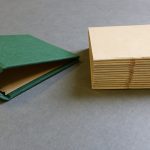
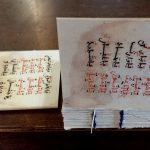
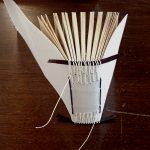
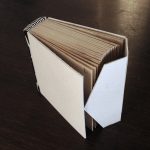
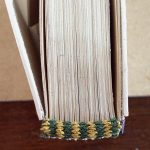

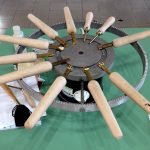

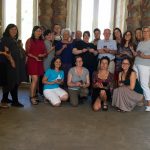
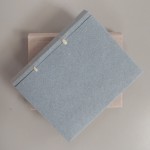 Previous Post
Previous Post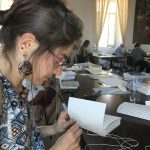 Next Post
Next Post